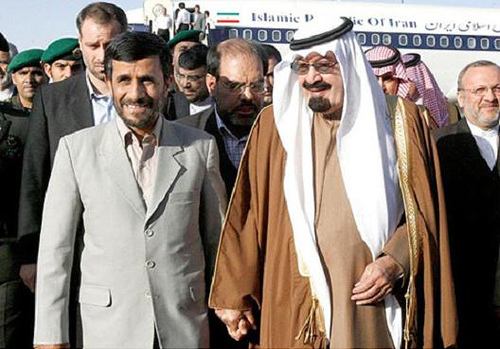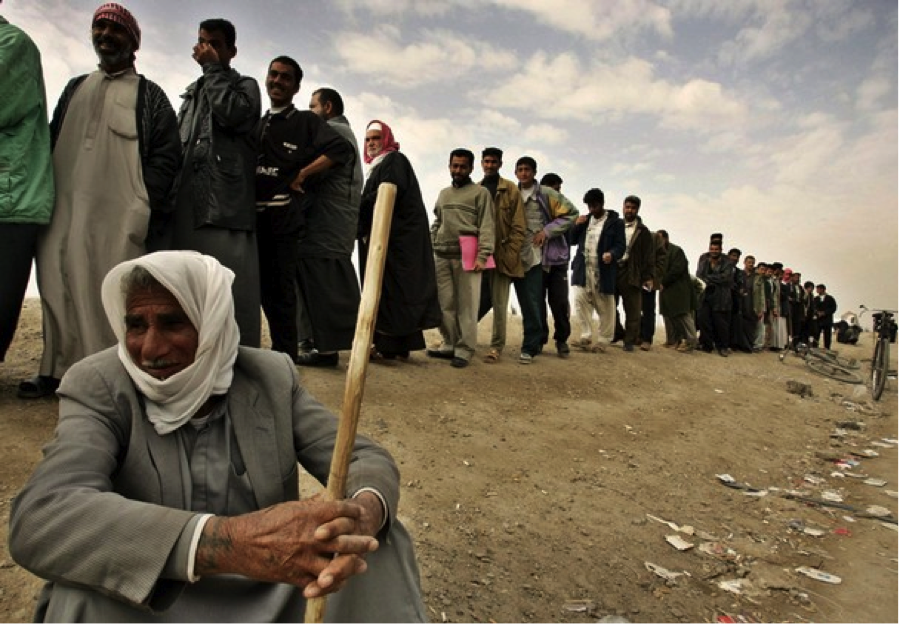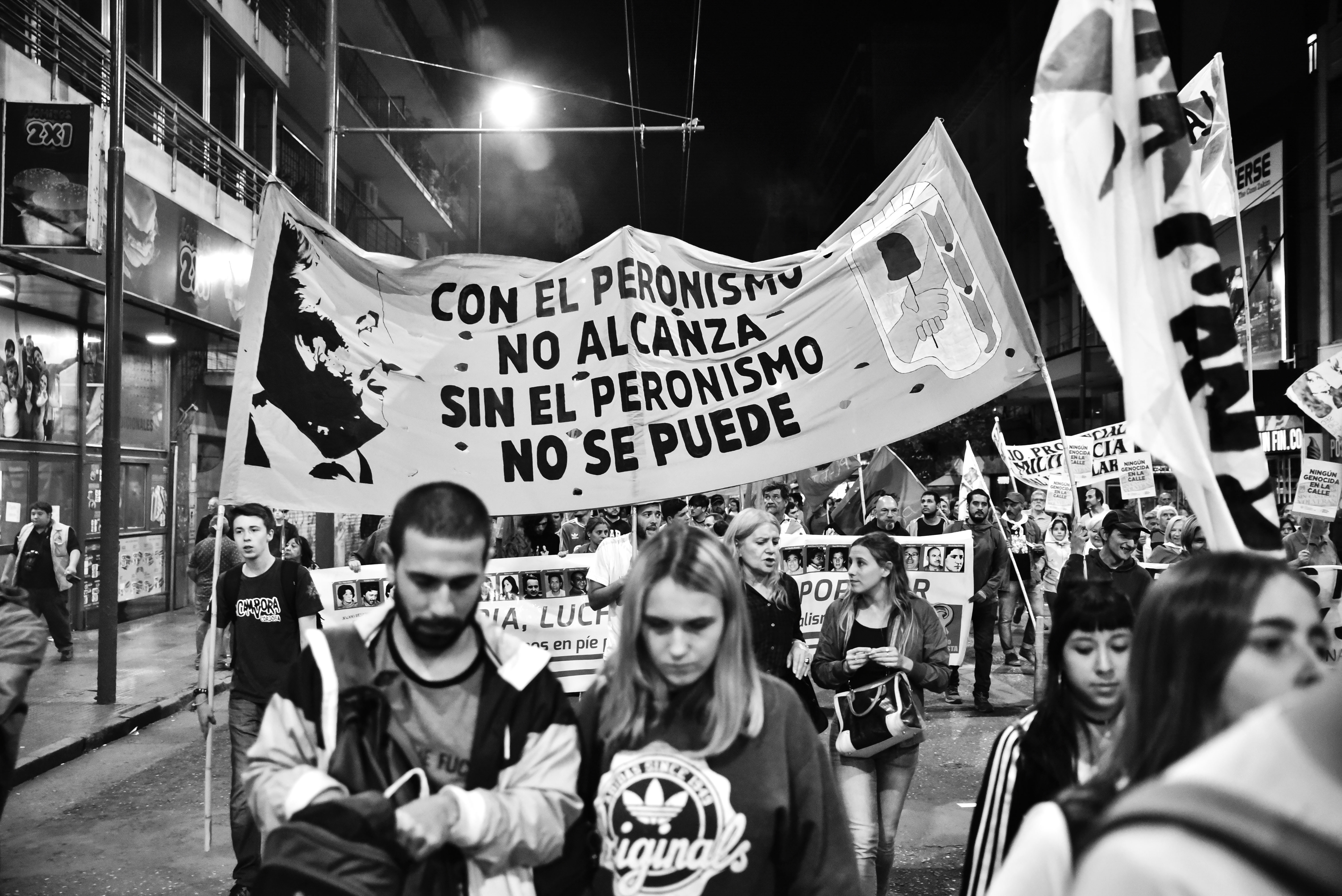This is Part II in a three-part series that examines the historical foundations, current dynamics, and future prospects of the relationship between Iran and Saudi Arabia. Part I provided a historical account of the relationship between the two countries and their people from 632 until the Iranian Revolution in 1979; Part II examines the relationship in the 30 years since.
Just as a new decade began, a war between Iran and Iraq erupted and gave the Saudi monarchy the opportunity to showcase their determination in holding the emerging Iranian Republic back. In 1980, the threat of an internal revolt from an Iraqi Shia majority long suppressed under Saddam Hussein’s minority led Sunni government prompted the Iraqi dictator to direct an invasion of neighboring Iran. Though Hussein pointed to oil and border disputes as driving his decision to invade, what he really hoped to do was suppress the new Iranian Shia movement and thus the potential for a similar movement in Iraq. Over the course of the war, Saudi Arabia supplied more than $25 billion in support of Baghdad as it fought the Iranian Revolutionary Guard. The decision to do so was crucial as it showed indisputable hostility from Saudi Arabia towards Iran, and contributed to the death of half a million Iranians, permanently scarring the Saudi-Iranian relationship. Fearing the threat of a powerful Iran, Saudi Arabia advised other Arab governments to follow its example and support Iraq.[i]
For much of the 1980s, the war was seen as a stalemate in which both sides suffered mounting casualties, but made no strategic gains in the process. The brutal August, 1988 destruction of an Iranian Kurdish village by Iraqi chemical weapons forced Iran’s hand to the negotiating table, and Tehran accepted peace through a UN mandated cease-fire later that year. UN Security Council Resolution 598 officially ended the eight-year war, which killed 500,000 Iranians and 240,000 Iraqis.[ii]
In 1987, an incident occurred in the Saudi city of Mecca that severely damaged already strained relations between Iran and Saudi Arabia. In July of that year, as the Iran-Iraq war was still being fought, Iranian radicals laid siege to the Grand Mosque of Mecca and killed 317 pilgrims and 85 security forces in the process. The Grand Mosque is widely believed to be the place where Mohammed received his first revelations, and is the most hallowed site in both Sunni and Shia Islam. The event caused global outrage as over 2,000 civilians were wounded and a large amount of damage was done to the mosque.

For much of the 1990s, relations between Iran and Saudi Arabia continued to deteriorate. Financially struggling after investing in the Iraqi war effort, Saudi Arabia and Iran engaged in further diplomatic disputes over oil prices and quotas as they sought to offset their respective war-debts. The Saudis encouraged gradual price and production increases, so as not to ‘shock’ their Western consumers, while Iran called for a more rapid escalation of quotas and prices. A June 1996 bombing in the Saudi city of Dharhan killed 19 U.S. Air Force personnel, and placed further stress on Saudi-Iranian relations when the U.S. government immediately blamed Iran.[iii] However, President Clinton later recanted the FBI’s pre-mature assessment as two very promising Iranian presidents emerged who were seen by the United States and Saudi Arabia as reformers and allies. Both presidents, Rafsanjani (1989-1997) and later Khatami (1997-2005), opened lines of communication between Tehran, Riyadh and Washington, and paved the way to the first official visits since pre-revolution diplomatic meetings. These meetings led to the May 1998 signing of the Comprehensive Cooperation Agreement between Iran and Saudi Arabia, an agreement that facilitated increased cooperation in economic, commercial, scientific, and technical fields, and was later expanded to include larger regional issues as well. As tensions eased between the U.S. and Iran during this period, Saudi Arabia became more likely to cooperate with Tehran, with King Fahd going so far as to encourage other Persian Gulf countries to follow its lead in improving relations with Iran. On April 18, 2001, Iran’s Interior Minister Abdol Vahed Musavi-Lari signed the Saudi-Iranian Security Agreement with Prince Nayef in Tehran. Both countries had realized that they would gain from the proposed positive-sum situation, rather than continuing their unsuccessful efforts to maximize economic benefits by working independently. This time of confidence building between the countries was referred to as a “new honeymoon”.[iv]
The 21st century has thus far revealed a world of skepticism and uncertainty between Iran and Saudi Arabia. Improved relations quickly deteriorated following the U.S. invasion of Iraq, and have grown markedly worse as Iran has expanded its sphere of influence in the region and become increasingly estranged from the international community. With Saddam Hussein out of Iraq in 2003, the issue of which sect would lead the Muslim world, Sunni or Sh’ia, emerged as a significant regional issue and a source of contentious debate between the two countries. Iran has attempted to fill this void, but its hard-line ideology and almost blanket support of other Sh’ia organizations, combined with its nuclear activities and progressive global isolation, has led many to be skeptical of Tehran. Over the past decade, Saudi Arabia has attempted to play a more prominent role in the Muslim world, but lacks legitimacy in the eyes of many Arab publics because of its close ties with the U.S. and its un-democratic traditions. In the last ten-years, Iran has shifted most of its efforts towards expanding its sphere of influence and building an alliance network. Iran and Syria retain strong ties, Tehran has provided munitions and funds to Iraqi insurgents, and the Iranian Republic is closely tied to Hezbollah in Southern Lebanon and Hamas in the Gaza Strip.
As nuclear security continues to be a hot-button issue in global politics, Iran has displayed blatant disregard for the demands of the Nuclear Non-Proliferation Treaty, despite its being a signatory, Instead, Iran continues to push for what many analysts believe is a nuclear weapon. If Iran is successful, it is unlikely that it would ever use a nuclear weapon unless the direst circumstances presented themselves, such as invasion by an outside army, and, in the eyes of Iran’s current leaders, a fully functioning nuclear deterrent would almost guarantee that such an event would never occur.
A number of countries have imposed round after round of crippling economic sanctions upon Iran without any signs of Iranian retreat. In fact, some believe that the sanctions are simply strengthening Iran’s resolve. Amid increased economic sanctions, Iran has threatened to essentially close the Strait of Hormuz, through which 1/6th of the world’s oil travels. Such a closure would be devastating to the economies of Saudi Arabia and the neighboring Gulf states. An inability to export petroleum, upon which the country’s economy is dependent, could cripple the undiversified business sectors of Saudi Arabia and other countries in the region.[v].
In 2009, Saudi Prince Faisal told U.S. Secretary of State Hillary Clinton that even the most severe economic sanctions simply weren’t enough to combat the threat of a nuclear Iran. In November 2011, Wikileaks released U.S. State Department cables that quoted Adel al-Jubeir, the Saudi ambassador to Washington and the target from last October’s assassination plot, as recalling “the king’s frequent exhortations to the U.S. to attack Iran and so put an end to its nuclear weapons program”. Adel al-Jubier was further quoted to say, “Although no longer in public office, Saudi Prince Turki al-Faisal has caused a rush of controversy by demanding that the conservative Islamic kingdom ‘look into all options we are given, including obtaining [nuclear] weapons ourselves’ if Iran successfully completes its intentions to do so.”[vi]
While immediate accusations by U.S. Attorney General, Eric Holder, placed blame on the Iranian government for Adel al-Jubeir’s attempted assassination, the plot symbolized much more than an isolated incident and has further damaged already fragile relations between Iran and Saudi Arabia. In early December, 2011, Saudi Arabia hosted talks with Iranian Intelligence Minister, Heydar Moslehiaimed, aimed at clearing up “misunderstandings” about the alleged plot by exposing them as baseless and unfounded.[vii] Negotiations and talks continue and could suggest a more optimistic future, although one could argue that diplomacy is largely ceremonial, has been tried before and failed, and ultimately won’t deter either state in their quest for regional hegemony.
The $1.5 million plot marks yet another turning point for the worse as simmering tensions between the two countries continue to flare up. Iranian support for Shi’a movements in Iraq and Bahrain, as well as its close ties with Syria, Hamas, and Hezbollah, continue though they may be undercut as fresh sanctions continue to bite. If successful in attaining nuclear weapons capabilities in the near future, Iran would possess a nuclear deterrent and could provide an umbrella to its proxy organizations, but in seeking such capabilities it is pitting itself against much more than just Saudi Arabia, and is giving the regional competitor a reason to develop its own nuclear capabilities as well.
Once familiar with an understanding of the diplomatic ties between Saudi Arabia and Iran, it becomes increasingly clear that there is a strong correlation between past and present events. The sometimes-fiery tensions that seem to erupt out of nowhere are not isolated events, but rather follow a tradition of clashing ideologies. Without any formal “hot” warfare declared between the nations, Saudi Arabia and Iran are not technically at war in the global arena but instead exhibit clear signs of cold warfare.
[i] Bowen, Wayne H. The History of Saudi Arabia. 88 Post Road West, Westport: Greenwood Press, 2008.
[ii] “Iran-Iraq War (1980-1988).” GlobalsSecurity.org, Accessed January 29, 2012. http://www.globalsecurity.org/military/world/war/iran-iraq.htm.
[iii] “Iran and Saudi Arabia’s ‘hate-hate’ relationship.” Accessed October 24, 2011.
[iv] Amiri, Reza E., and Ku Hasnita K. Samsu. “Security Cooperation of Iran and Saudi Arabia.” International Journal of Business and Social Science 2, no. 16 (2011): 246-252.
[v] Beutel, Peter. “Iran & the Strait of Hormuz: Bad Bluff or Good Gamble? .” Cameron Hanover, Last modified January 5, 2012. Accessed January 10, 2012. http://www.cameronhanover.com/2012/01/iran-the-strait-of-hormuz-bluff-or-strategic-gambit/.
[vi] Daily Mail Reporter. “Saudi Arabia may need nuclear weapons to fend off threat from Iran and Israel, says former intelligence chief.” Daily Mail, Last mo
dified December 6, 2011. Accessed January 10, 2012. http://www.dailymail.co.uk/news/article-2070704/Saudi-Arabia-need-nuclear-weapons-fend-threat-Iran-Israel-says-prince.html.
[vii] “Iran holds rare talks with Saudi Arabia to deny US envoy plot.” New York Post, December 14, 2011.


